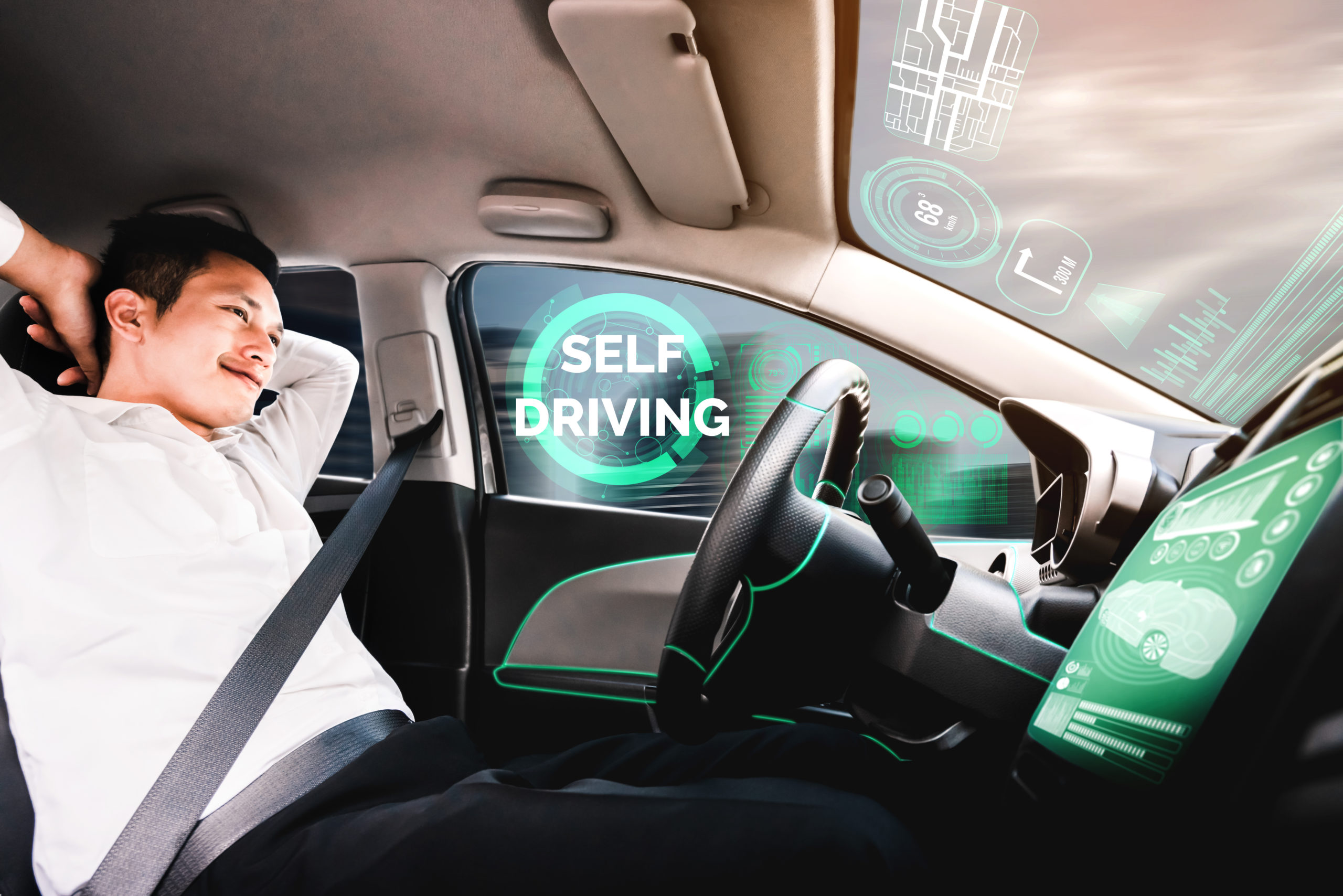IN2CCAM project: Enhancing Integration And Interoperability of CCAM Eco-System

IN2CCAM project, according to the vision of Horizon Europe framework programme from 2021-2027 (Call: Horizon-CL5-2022-D6-01-04 “Integrate CCAM services in fleet and traffic management systems”) aims to accelerate the implementation of innovative CCAM technologies and systems for passengers and goods, by developing, implementing and demonstrating innovative services for connected and automated vehicles, infrastructures and users.
Coordinated by the Polytechnic University of Bari (Italy), IN2CCAM brings together 21 partners from 10 countries to design, implement and validate innovative CCAM services for vehicles, infrastructures, and users, paving the way for safer, smarter, and more sustainable urban mobility.
The IN2CCAM approach is based on the implementation and integration of enhanced Physical, Digital and Operational Infrastructures (PDOIs) to enrich CCAM services and increase safety and traffic efficiency. The proposed actions helped to develop new mobility concepts for passengers and goods, leading to healthier, safer, more accessible, sustainable, cost-effective and demand-responsive transport everywhere.
Starting from the analysis of the CCAM ecosystem, the project determined the users, authorities and industrial stakeholders needs, the physical, digital and operational infrastructures requirements.
The set of physical, digital and operational solutions are developed and implemented in 4 Lead Living Labs (LLs): Tampere (Finland), Trikala (Greece), Turin (Italy) and Vigo (Spain). Moreover, two Follower LLs collaborated in the design phase by providing ideas and data assessed by simulation test and validation: Bari (Italy) and Quadrilatero (Portugal). New simulation models are implemented also in the Lead LLs to test and forecast the proposed solutions in traffic conditions considering many Coperative, Connected, and Autonomous Vehicles (CCAVs).
Some physical infrastructures in each LL are updated so that the autonomous vehicles can travel in dynamic dedicated lanes, use intelligent traffic lights and intelligent road signs.
Digital intelligent infrastructures are developed in IN2CCAM by employing all technologies necessary for enhancing and integrating CCAM in the urban and peri urban road traffic: artificial intelligence (AI) solutions, Digital Twin (DT) based decision making, interoperability between different transportation and traffic management systems. New services and applications for smart devices are designed and implemented for traffic balancing by proposing alternative less congested roads, road selection to decrease traffic and congestion, Vulnerable Road Users (VRU) enablers.
Operational Infrastructures are integrated in urban planning and urban economics, with appropriate governance models to ensure collaboration between stakeholders. Business models for automated and shared vehicles are provided, as well as interoperability and integration with public transport.
The developed solutions and services are tested and evaluated in real-world conditions in the four Lead LLs and in the simulation environments in all the LLs.
In Tampere LL, five CCAVs shuttles and one car equipped with automated devices for autonomous drive are used to demonstrate the integration of traffic and CCAM fleet (last mile mobility of people) considering the Green Light Optimized Speed Advisory (GLOSA), Public Transport Vehicle Crossing for Autonomous Vehicle (AV), and AV detected event tests.
The pilot revealed key insights: traffic light data quality and environment suitability must be guaranteed before deployment, while harsh Nordic weather demands sensor and algorithm resilience from AV manufacturers. Real-life results from IN2CCAM directly inspired local policy change. In June 2025, the Tampere Public Transport Committee approved a new autonomous bus pilot without safety drivers, aiming to evaluate the cost-effectiveness of robot buses as part of public transport.
In Trikala LL, two retrofitted minivans equipped to be CCAVs are used to test GLOSA, traffic-based green wave system, and VRU warning systems. Such services make use of the Cooperative Intelligent Transport Systems (C-ITS) infrastructure installed along the AV route. In fact, key signalised intersections along the route have been equipped with Road-Side Units (RSUs) which broadcast Vehicles to Everything (V2X ) messages, among others. Such messages are received by the On Board Units which are mounted on minivans and thus, allow for the interaction between C-ITS infrastructure and AVs. In addition to the V2X communication, the VRU warning solution integrates the AI traffic cameras, monitored by the local Traffic Management Centre (TMC), which have been installed at the busiest signalised junction of the route. The GLOSA and VRU warning systems have been incorporated in a web application which runs locally on a dashboard-mounted tablet inside one of the two minivans. In addition, journey planner interconnecting autonomous, demand-responsive solutions with available public transport services is developed in a simulation test, characterised by larger fleets of AVs. The results were tangible: 12% fewer stops and up to 18% smoother signal crossings. Passengers reported safer, more comfortable rides, and found the digital journey planner intuitive and convenient. The experiments also highlighted governance and regulatory challenges, securing signal timing approvals, ensuring low latency for safety-critical communication, and balancing speed limits with user comfort as key lessons for scaling up CCAM deployment across Europe.
In Turin LL, one CCAV shuttle is used to test the re-routing service in a public roads circuit areas of 5 km and 17 signalised intersections. More in detail, when a disruption event occurs, a DT performs a simulation in SUMO (a suitable software for mobility simulation) to determine the new best route minimizing travel time. CCAV uses the new route received by the DT when it improves the travel time compared to a prefixed route. The same re-routing approach is performed in simulation with additional information such as parking availability and Urban Vehicle Access Regulation (UVAR) publication. Using real-world data and DT simulations, the system achieved a 17% reduction in travel time, proving the feasibility of real-time communication between vehicles, infrastructure, and traffic control centres. Technical hurdles, such as overhanging obstacles and initial traffic light desynchronisation, were successfully resolved, showcasing Turin’s readiness for wider CCAM integration.
In Vigo LL, two cars equipped with automated devices are used firstly to demonstrate the data interchange between CCAM fleet, infrastructure and GLOSA. Moreover, the traffic light priority service for CCAVs is implemented in cooperation with GLOSA showing significant improvements. The traffic light priority service is also tested in simulation with the aim of preserving CCAV fleet platoon crossings, showing the best reduction of queue waiting time. Other simulation tests regard the CCAV reaction to another vehicle entering a roundabout and a dynamic re-routing of AV based on traffic load. Despite urban constraints and environmental challenges, the Vigo LL confirmed the stability of V2X communication and provided valuable lessons on safety, resilience, and operational performance in active city environments.
In Bari follower LL, a Deep Reinforcement Learning (DRL) for optimal path generation in realistic urban environments, leveraging historical traffic data provided by TomTom APIs is proposed. The optimal path is determined in three main scenarios: transportation of a single person, transportation of a single person with reduced mobility, and carpooling. The first scenario strategy considers traffic conditions to determine the optimal route in terms of time and distance; the second scenario adds the minimisation of the person discomfort (i.e. reducing the sharp turns); the difficulty of the third scenario consists of determining the best sequence between pick-ups and drop-offs, as well as the time and distance minimisation. In parallel, an innovative solution employing Hub-and-Robots routing in last-mile delivery proposed strategically uses of central hubs and robots to optimise urban delivery operations. The SUMO simulation tests underlined the need for careful integration of automated deliveries within urban environments and the potential of dedicated robot corridors to enhance both safety and efficiency.
In Quadrilatero follower LL, an enhanced high-definition map of urban areas is developed in order to perform different SUMO simulations of defined test scenarios, considering a suitable configuration imposed by the CCAM operator. In particular, it is possible to impose blocking roads and lanes for pedestrians and CCAVs, changing parking availability from curbs to assess traffic performance, changing or removing stops and reserving lanes, creating low-emission zones, and running ad-hoc simulations with files previously created. Strong public support emerged for sustainable mobility policies, with more than 90% of respondents endorsing low-emission zones and a majority prioritising improved traffic efficiency over parking availability. Technically, the Quadrilatero LL demonstrated the scalability of DT for urban mobility planning, showing how data-driven simulations can help municipalities make informed decisions and prepare for CCAM deployment across metropolitan regions.
Building trust and readiness for CCAM deployment
IN2CCAM not only demonstrated advanced connected and automated mobility technologies. It also explored the societal, regulatory, and governance conditions needed to bring them into everyday life. Across its six Living Labs, the project gathered valuable insights on user acceptance, business readiness, and policy alignment, setting the foundations for large-scale CCAM deployment.
Through local engagement and online surveys, citizens shared their expectations and concerns about automated mobility. Their feedback made one message clear: safety, connectivity, and transparency are key to building trust. Local authorities and operators collaborated closely to identify infrastructure gaps and opportunities for digital integration. The results showed that technological innovation must go hand in hand with public understanding, and that cooperation between cities, industry, and citizens is vital to success.
The Awareness Events were a highlight of the project, bringing real demonstrations to Tampere, Trikala, Turin, and Vigo, and simulation showcases to Bari and Quadrilatero. These events sparked dialogue between stakeholders and showed how connected and automated mobility can make urban transport safer, cleaner, and more inclusive.
At the policy level, IN2CCAM partners outlined a framework for regulatory and governance alignment. The recommendations call for harmonised approval procedures across Member States, clear rules on liability and data sharing, and coordinated national and local authorities to guide CCAM deployment. Transparent permitting systems, together with innovation-friendly testing zones, will help scale CCAM services from pilots to permanent operations.
The project also proposed flexible business and operating models to ensure sustainability beyond pilot phases. Cities could adopt modular CCAM services tailored to their mobility priorities, supported by hybrid funding mechanisms and strong community engagement. Ultimately, IN2CCAM’s real-life demonstrations and simulations proved that CCAM solutions can improve traffic flow, reduce emissions, and enhance road safety for all users. As the project concludes in October 2025, it leaves a roadmap towards a trusted, inclusive, and sustainable mobility future.
IN2CCAM project was invited to present its outcomes at more than 30 conferences, workshops and keynotes. During the three years the consortium published more than 25 papers in conference proceedings and 8 papers in journals, all with peer revision.
In the following we list some of the main publications:
- W. A. Ali, M. Roccotelli, G. Boggia, and M. P. Fanti, “Intrusion Detection System for Vehicular ad Hoc Network Attacks Based on Machine Learning Techniques”, Information Security Journal: a Global Perspective, vol. 33, no. 6, 2024.
- M. del Cacho Estil-les, M.P. Fanti, W. Ukovich, “Managing Innovation in European Research Projects,” International Journal of Business Management and Finance Research, Academia Publishing Group, vol. 8(2), pages 14-25, 2025.
- S. Dundar, S. Alp, I.M. Ulu, and O. Dursun, “Application of Traffic Load-Balancing Algorithm – Case of Vigo ”, Sustainability, vol. 17 (19) – 8948, 2025,
- M. A. del Cacho Estil-les, M. P. Fanti, A. M. Mangini “Risk Evaluation of Autonomous Vehicle Integration in Traffic Environments” 11th 2025 Int. Conf. on Control, Decision and Information Technologies, July 15-18, 2025, Split, Croatia.
- Krendeleva, B. Silvestri, A. M. Mangini, M. P. Fanti “Sustainable Last-Mile Delivery with Autonomous Aerial Vehicles and Autonomous Terrestrial Robots: a Case Study” 11th 2025 Int. Conf. on Control, Decision and Information Technologies, July 15-18, 2025, Split, Croatia.
- N. Chkhartishvili, E. Aittoniemi, M. Tarkiainen, K. Kauvo, “Enhancing integration of automated shuttles to urban transport – Experiences from field tests and simulations ” ITS European Congress 2025, 19 – 21 May, 2025, Seville, Spain.
- Sadeghi, J., Caroleo, B., Botta, C., Arnone, M. (2025). Evaluating Traffic Control Strategies for Autonomous Shuttle in Different AV Penetration, Using SUMO Traffic Simulation. In: Kocian, A., Milazzo, P., Henriques Martins, A.L., Nanni, M., Pappalardo, L. (eds) Intelligent Transport Systems. INTSYS 2024, December, 5-6, 2024, Pisa, Italy.
- 8. Juan C. Estrada-Jiménez, Valdemar R. Farré-Guijarro, Diana C. Alvarez-Paredes, Marie-Laure Watrinet, “Digital Twin for Advanced Network Planning: Tackling Interference” IEEE International Symposium on Personal, Indoor and Mobile Radio Communications, 2-5 Sept 2024, Valencia, Spain.
- G. Volpe, A. M. Mangini, M.P. Fanti, “A Cooperative DRL Approach for Autonomous Traffic Prioritization in Mixed Vehicles Scenarios” IEEE International Conference on Automation Science and Engineering (IEEE CASE 2023), 26-30 August 2023, Auckland, New Zeland.
Access all publications in https://zenodo.org/communities/in2ccam/records?q=&l=list&p=1&s=10&sort=newest
Contact information:
Maria Pia Fanti Project coordinator (POLIBA)
Maria del Cacho (POLIBA)
Agostino Marcello Mangini (POLIBA)
Julia Rodriguez Rayego (ERTICO)
Bartolo Silvestri (POLBA)
Walter Ukovich (POLIBA)

